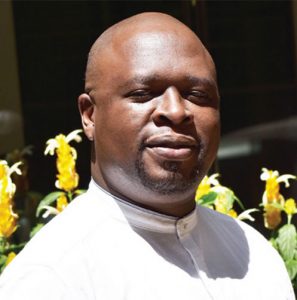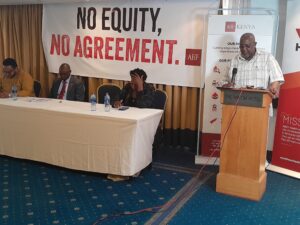
By OMBOKI MONAYO
omboki2725@gmail.com
According to Egerton University researcher and water management expert Prof Japheth Onyando, IWRM integrates the management of social and natural systems, water quality, and coordination with other natural resources including the land, atmosphere, and biosphere.
“IWRM must always prioritize water use through a holistic and cross-cutting approach. In this model, we seek to efficiently manage water in totality and not just focus on safe water for drinking,” he says.
The East African nation has recently experienced heavy rains that have caused flooding and destruction of residences and property in places like Kano in Kisumu County and South Mugirango in Kisii County.
Despite the downpours that have been recorded countrywide, reliable safe water supply for Kenyans however remains a mirage.

According to Dr. Malesi Shivaji who heads the Kenya Water and Sanitation Civil Society Network (KEWASNET), the country has a water supply shortfall of at least 600 cubic meters per capita.
“Kenya is least endowed in water supply terms, with a 400 cubic meters per capita availability, against the UN recommended availability of 1000 cubic meters per capita,” says Dr. Shivaji.
Prof Onyando said the country’s endowment or water supply status was first estimated along with the country’s population during the construction of the Uganda Railway in 1896.
“Our endowment was first estimated in 1896 when the Uganda Railway construction was begun,” said Prof Onyando.
“Kenya’s endowment at the time was 20bn cubic meters, which works out to 8,000 cubic meters per capita,” the scientist added.
Since then, this endowment level has significantly reduced due to population growth.
“According to globally accepted standards, any endowment less than 1,000 cubic meters is classified as water stressed. Kenya is currently classified as a chronic water-stressed country, with an endowment of approximately 490 cubic meters per capita,” he said.
Data collected and analyzed by an Egerton University study in shows that the situation is projected to worsen in the coming years.
“By 2030, the country’s endowment will be at 393 cubic meters per capita. By 2050 it will be just 293 cubic meters per capita,” Prof Onyando revealed.
“Kenya’s demand ratio will increase and surpass availability. There will be a very big difference between what we have versus what we need,” he told sasanews.co.ke

The statistics indicate that Nairobi County, which is currently home to 4,397,0734m residents as per the 2019 National Census, will not fare any better in the projected endowment levels.
Nairobi, which gets most of its water supply from the Athi River catchment area, will be at a demand ratio of 80 by 2030 and decline to 70 by 2050.
To save the city from water supply woes, the academic recommends that it seeks the assistance of Tana River County.
“Tana River will have to supply Nairobi with water by 2030 to overcome the shortfall,” says Prof Onyando.
Management challenges have been identified as a major obstacle to the seamless administration of the country’s water resources.
Dr. Shivaji says the country’s water sector continues to suffer from inefficiency in service delivery due to a bloated management structure, with some 18 statutory bodies mandated to carry out different functions. This sad state of affairs has led to a confused and uncoordinated administration of its affairs.
“The bloated structure has given rise to several inefficiencies in the water sector, including the duplication of some functions and contradictory terms of reference for others,” says the scientist who heads the think tank.
On his part, Prof. Onyando said many Kenyans continue to ail from what he termed ‘water blindness’.
“Many of us suffer from water blindness and related wasteful use of available water. This comes from the mistaken notion that there is plenty of water all around us yet we are currently classified as a water-stressed nation,” said Prof. Onyando.
He says rainwater harvesting should be encouraged in the city and other parts of the country.
“As a country, we should manage the water catchment areas so that we have more groundwater and surface water stored using dams. Water harvesting should not be dismissed as a poor person’s pastime but should be nationally embraced to significantly reduce shortages during the dry seasons,” said the academic.
The academic is urging the implementation of urgent remedial measures to conserve the environment and arrest the dwindling water supply.
“We can safeguard our diminishing water supply status by protecting water catchment areas to store more water, reducing the soil loss from construction activities from 600 tons of soil per hectare per year to 11 tons per hectare, and boosting the national forest cover from 7.4 percent to the UN recommended 10 percent,” the expert recommends.






